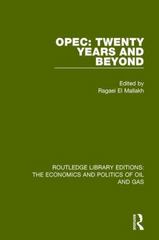Question
Question 17 In the short run, a perfectly competitive firm must decide: a. only the level of output that will maximize its economic profits or
Question 17
In the short run, a perfectly competitive firm must decide:
a. only the level of output that will maximize its economic profits or minimize its economic losses because the price is determined in the market.
b. only the price to charge for its product that will to maximize its economic profits or minimize its economic losses because the quantity is determined in the market.
c. neither its price nor the quantity it will produce because both are determined in the market.
d. the price to charge for its product, and the level of output that will maximize its economic profits or minimize its economic losses.
e. whether or not it should advertise.
Question 23
Suppose a perfectly competitive firm increases production from a point where marginal cost equals average total cost to a point where marginal revenue and marginal cost are equal. Is it a good idea for the firm ? Why?
a. Yes, because average variable costs are always less than average total costs.
b. No, the previous level of output was the most efficient because it had the lowest average total cost.
c. Yes, even though the previous level of output had minimized the average total cost, there was still profit to be earned by producing additional units.
d. No, average total costs have increased which means the firm is not minimizing losses.
Question 31
In the presence of positive externalities, a free market will choose a price which is too ____ and produce an output which is too ____ compared with the social optimum.
high; high
high; low
low; high
low; low
Question 32
The equilibrium price in a competitive market:
a. clears the market so there are no shortages or surpluses.
b. equates the buying intentions and abilities of consumers with the selling intentions and abilities of producers.
c. remains unchanged as long as supply and demand do not change.
d. All of the above.
Question 38
If the supply of coffee falls due to bad weather conditions in coffee-producing countries, and the demand curve does not shift, then the:
a. price and quantity of coffee will fall.
b. price and quantity of coffee will rise.
c. quantity of coffee sold will fall, but its price may rise or fall.
d. price of coffee will rise and quantity will fall.
e. price of coffee will fall and quantity will rise.
Step by Step Solution
There are 3 Steps involved in it
Step: 1

Get Instant Access to Expert-Tailored Solutions
See step-by-step solutions with expert insights and AI powered tools for academic success
Step: 2

Step: 3

Ace Your Homework with AI
Get the answers you need in no time with our AI-driven, step-by-step assistance
Get Started


